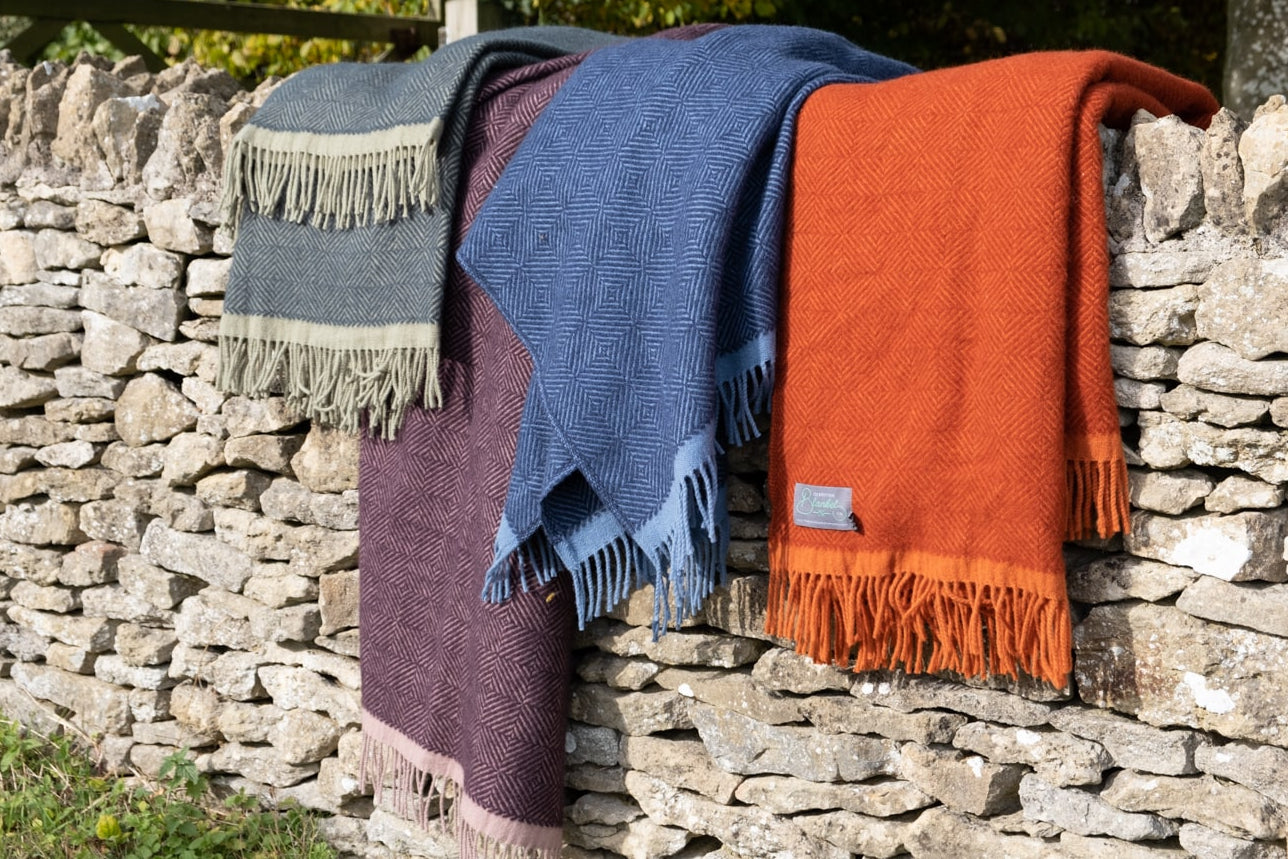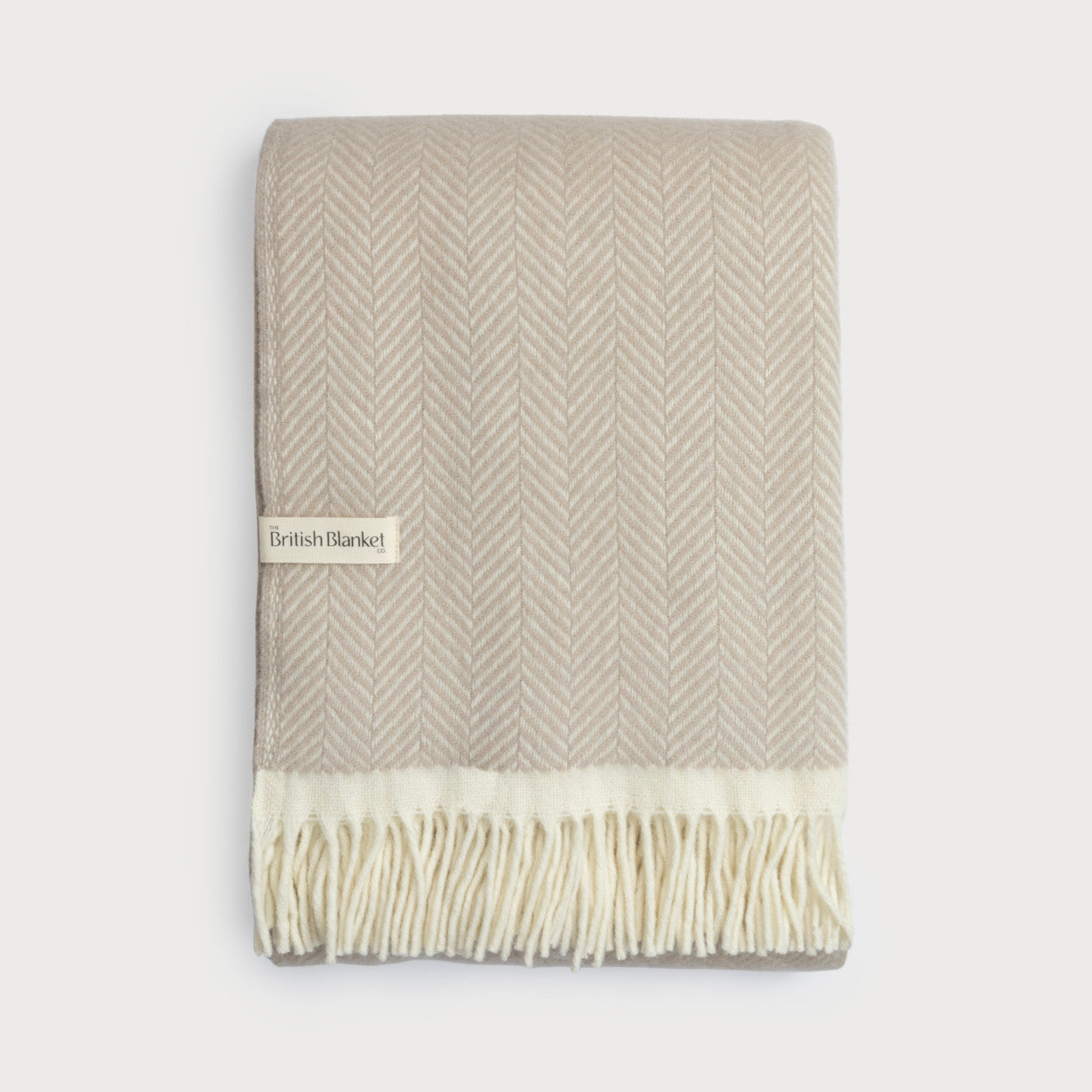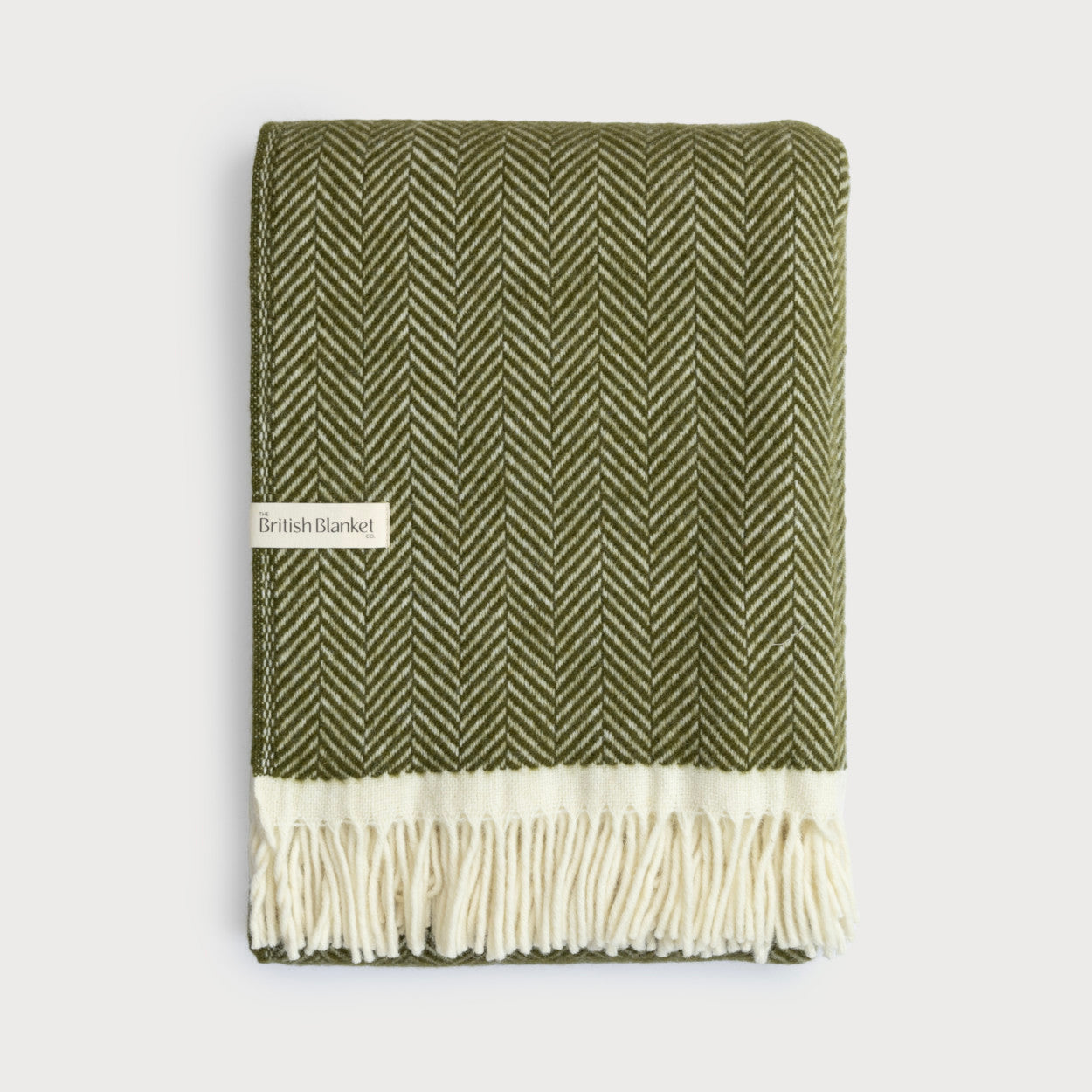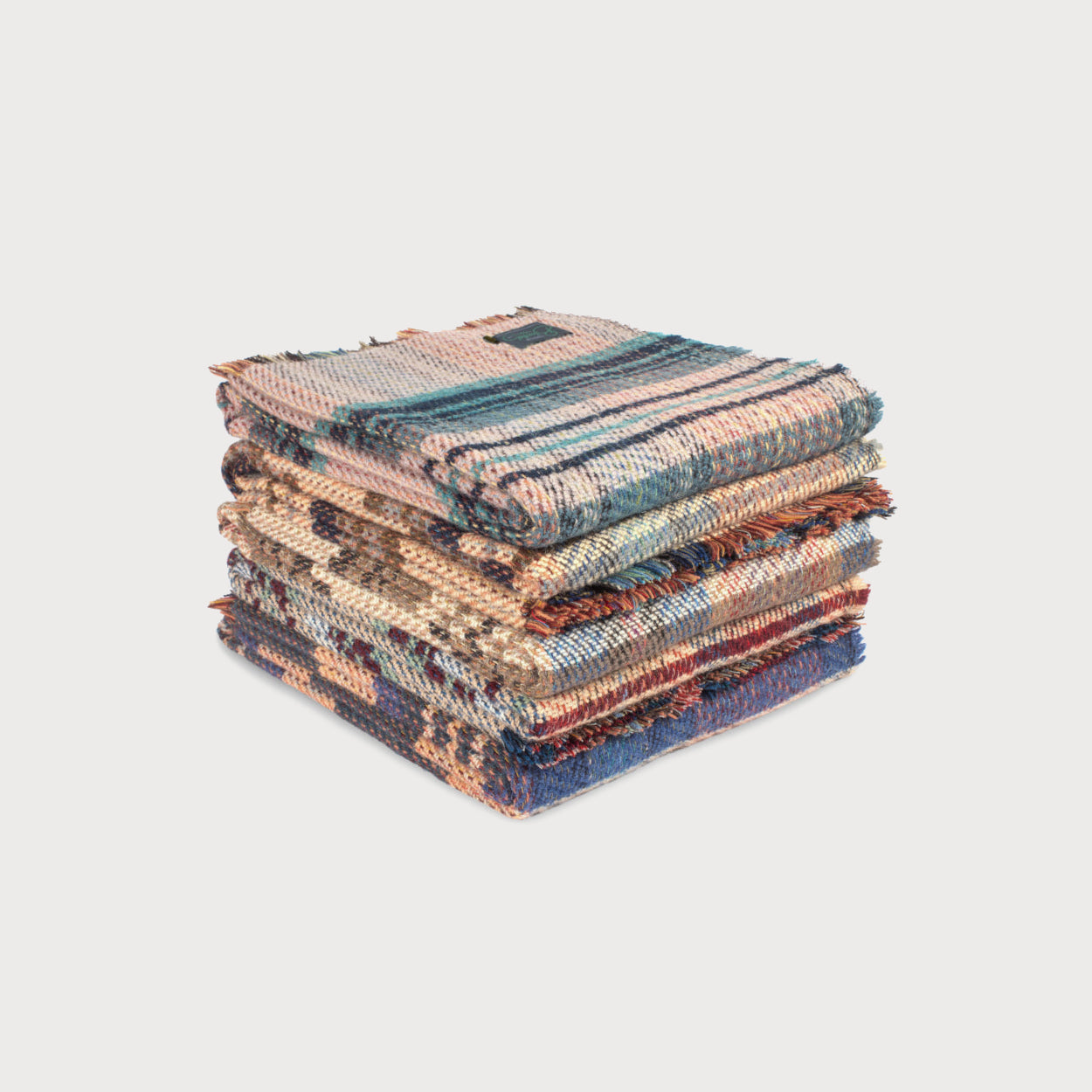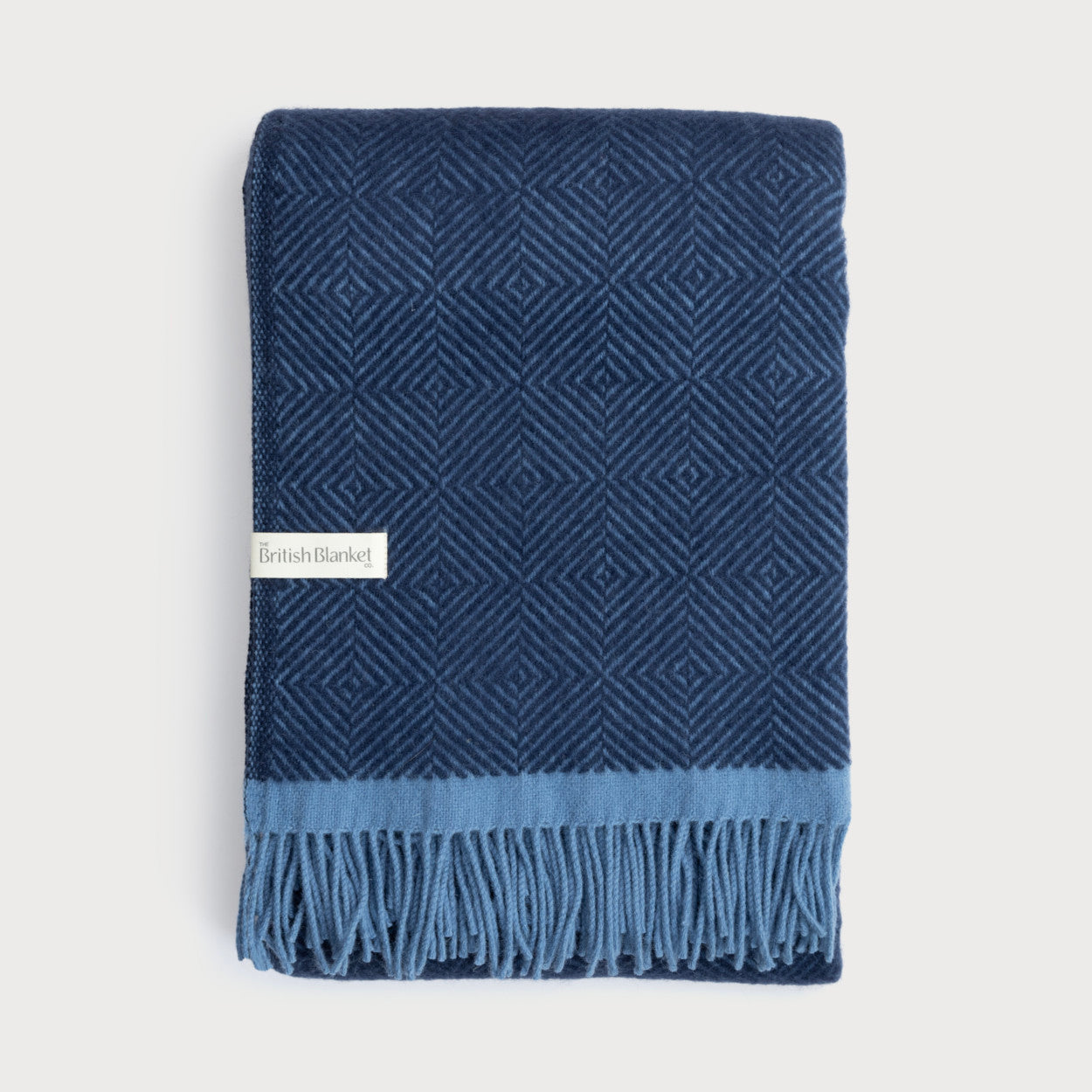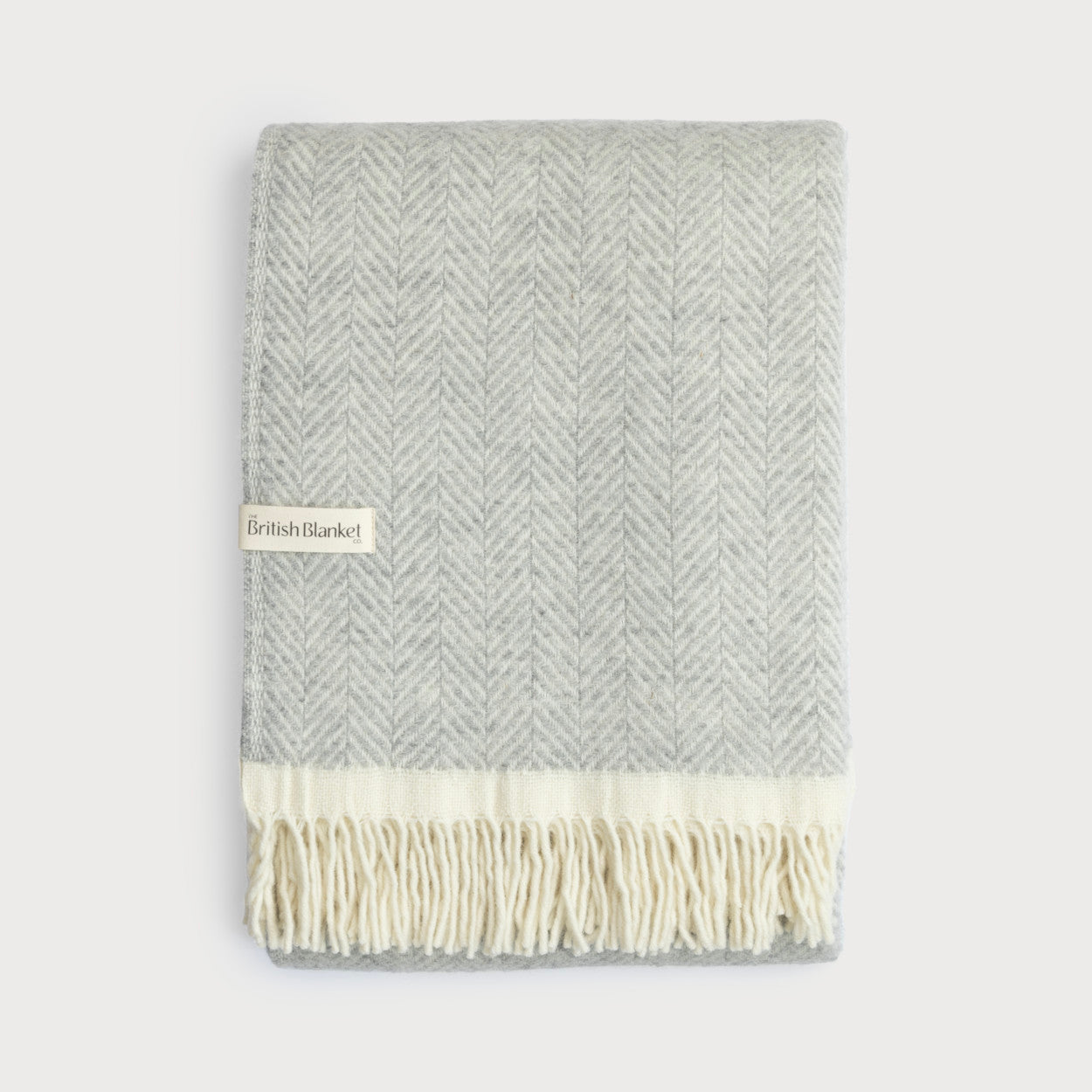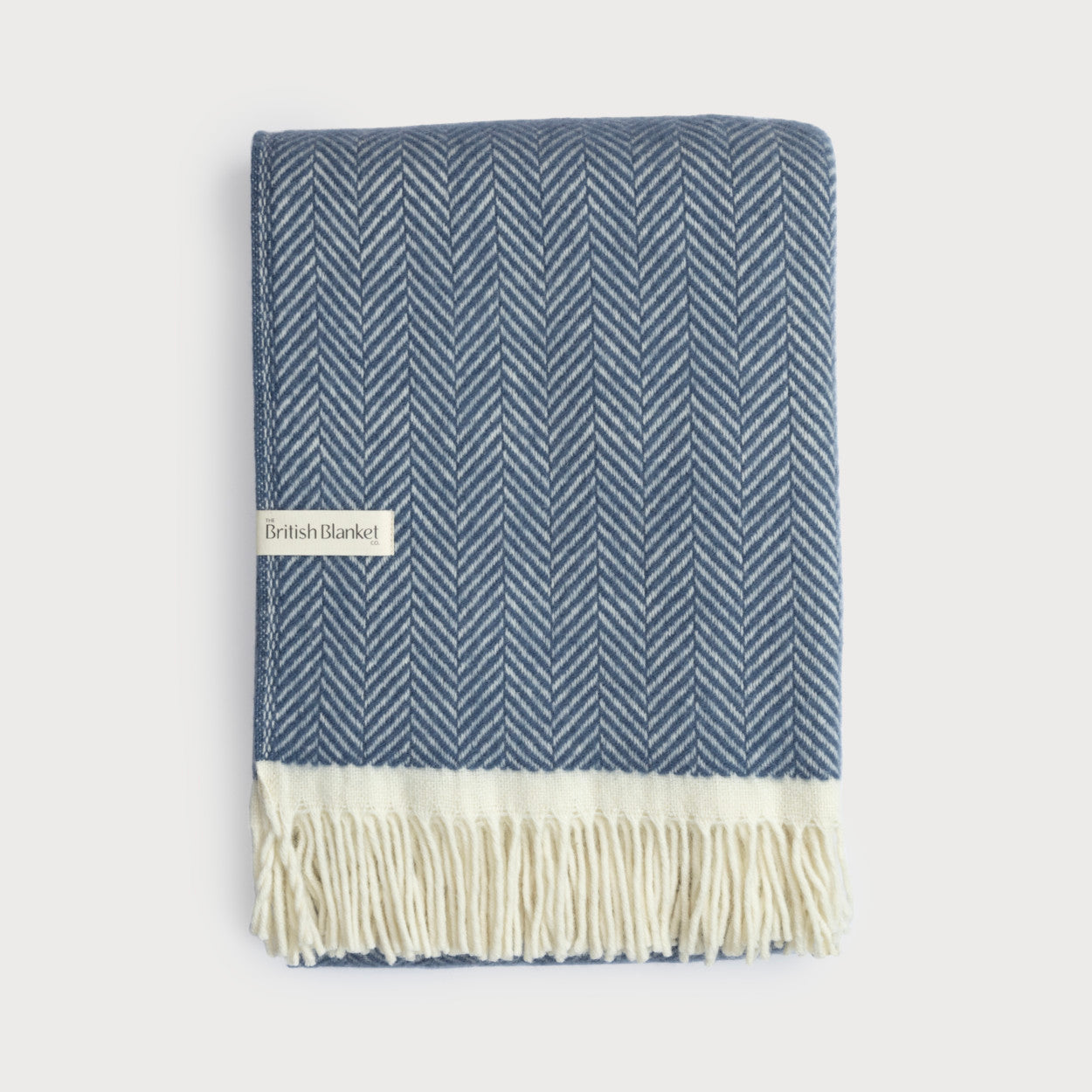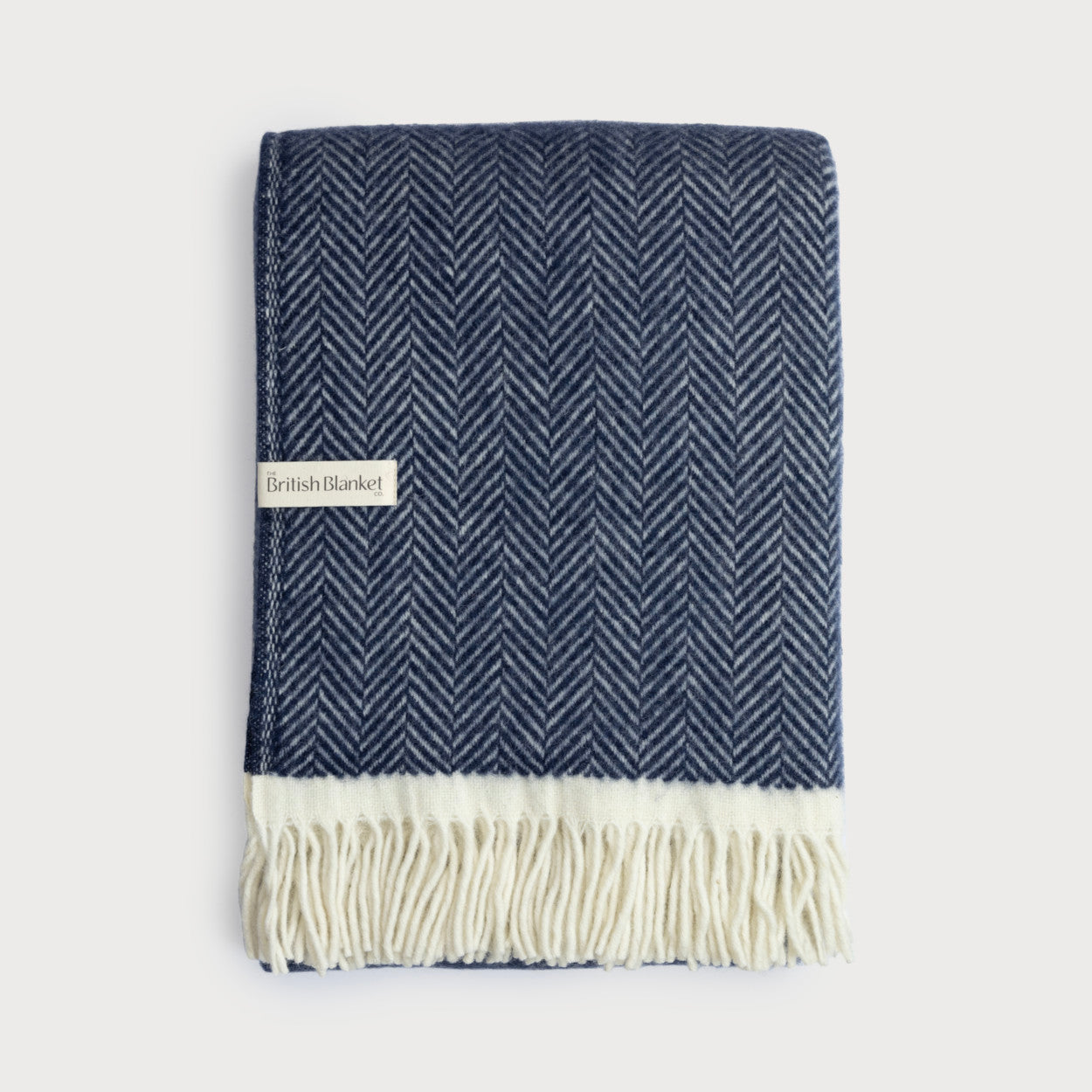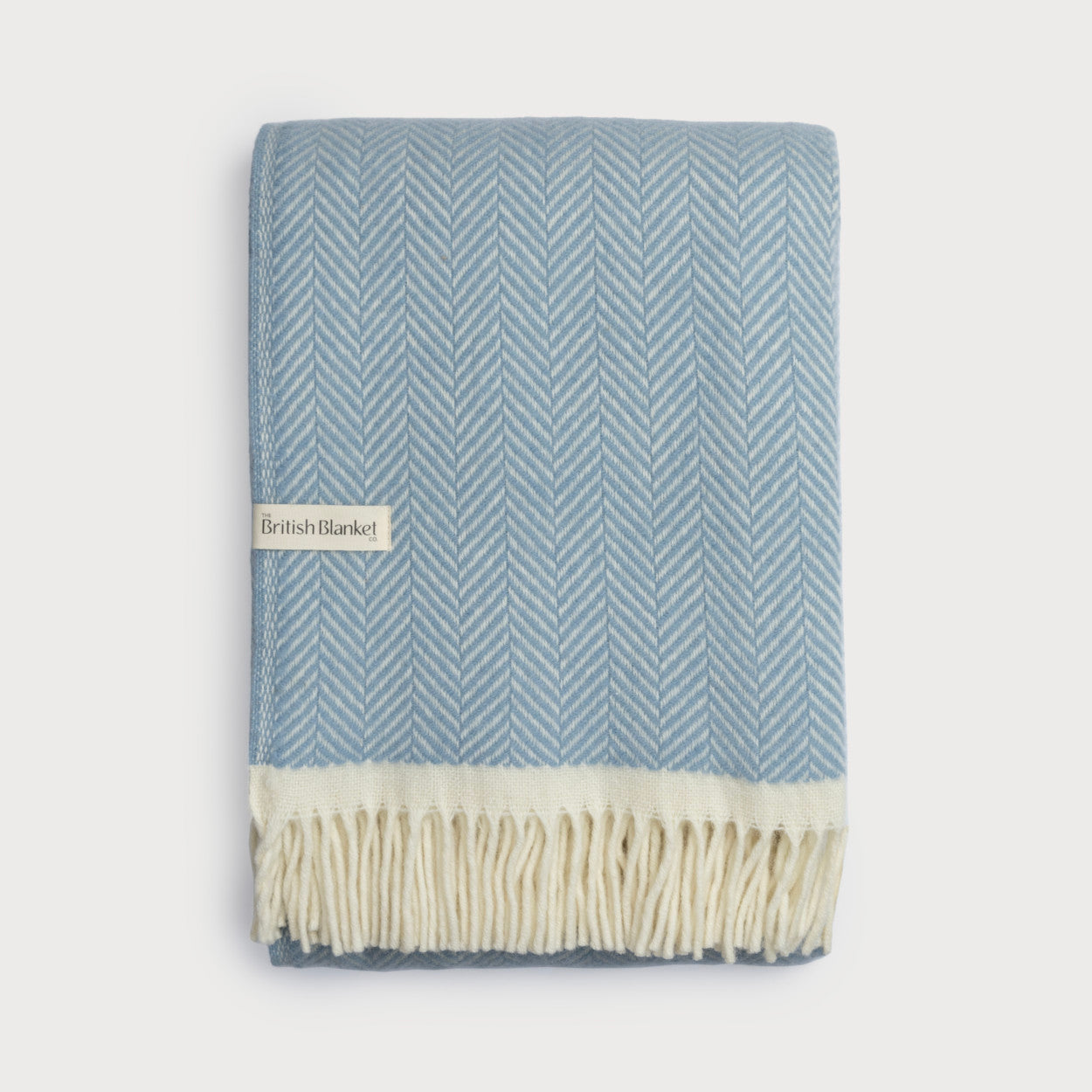Care Guide
Care Guide for wool, merino wool and cotton blankets and scarves
The British Blanket Company's blankets and scarves are crafted from high-quality natural fibres, including pure wool, merino lambswool, alpaca, and cotton. Natural fibres offer superior warmth, breathability, and softness compared to synthetic materials, making them a luxurious choice for your home. However, they do require more delicate care to maintain their beauty over time.
Follow our guides to keep your blanket or scarf looking and feeling its best.
How to Care for Pure Wool Blankets
- Air: Regularly shake out your blanket to remove dust and refresh the fibres. Wool is naturally odour-resistant, so regular airing helps to avoid washing more than necessary.
- Hand Wash: When hand-washing wool, use cold water and a wool-specific detergent. Gently agitate without wringing to avoid felting.
- Machine Wash: If your blanket is labelled as machine washable, you must use a delicate wool cycle. This should be a specialist short cycle with cool water and minimal agitation and spin to avoid shrinking and felting - do not use a standard cold wash. Avoid fabric conditioners as these can clog natural fibres.
- Drying: Remove immediately from the drum, lay your blanket flat on a clean towel and roll it up to gently squeeze out excess water. Then hang to dry ensuring even weight distribution to avoid stretching. Do not wring or tumble dry.
- Storage: Fold your blanket and store it in a breathable cotton bag. You can add natural moth deterrents like cedarwood or lavender.
- Pilling: Fluffy wool blankets shed at first and develop small pills (bobbles), especially in areas of friction. Remove these gently by hand or with a wool comb to restore a smooth surface.
- Suitability: Our wool blankets are not recommended as protective chair / sofa covers as friction leads to premature wear and pilling.
How to Care for Cotton Blankets
- Machine Wash: Wash your cotton blanket at 30°C on a short cycle. Wash separately to preserve the vibrant colours.
- Drying: Hang your blanket to dry naturally, allowing fresh air to circulate. To achieve an even softer finish, the air-dried blanket can be given an optional short cold tumble dry to fluff up the fibres.
- Pilling: Brushed cotton blankets may occasionally pill, especially in high-friction areas. Remove any pills carefully with a fabric shaver or by hand to maintain a smooth texture.
- Suitability: Our cotton blankets are not recommended as protective chair / sofa covers as friction leads to premature wear and pilling.
How to Care for Alpaca Blankets, Merino Lambswool Blankets & Scarves
- Air: Shake out your blanket or scarf to remove dust and hang it in the fresh air for an hour or so to refresh the fibres. Wool is naturally odour-resistant, so regular airing helps to avoid dry cleaning more than necessary.
- Dry Clean Only: Merino wool is a delicate fibre, and professional dry cleaning is recommended to preserve its softness and structure.
- Spot Cleaning: For minor marks, blot gently with a clean, damp cloth. Avoid rubbing, which can damage the fine fibres.
- Storage: Fold your blanket and store it in a breathable cotton bag. Consider adding natural moth repellents such as cedarwood or lavender.
- Pilling: Merino wool can develop pills with use, particularly in areas of friction. Remove these carefully by hand or with a wool comb to keep the fabric smooth.
- Suitability: Our merino blankets are not recommended as protective chair / sofa covers as friction leads to premature wear and pilling.
By following these care tips, your blanket or scarf from The British Blanket Company will remain a cherished item for years to come. The small effort you invest in their care will ensure that they continue to provide warmth, comfort, and style, showcasing the natural beauty and superior quality of these luxurious fibres.
Safety Guide for wool, merino wool, alpaca and cotton blankets and scarves (GPSR)
Our products are crafted to the highest quality standards, however, it’s important to use them responsibly and in line with their intended purpose. Please read the safety information below to ensure safe and enjoyable use of our blankets, baby blankets, and scarves.
General Safety Information for All Blankets
Our wool, alpaca and cotton blankets are designed for use as a decorative accessory in domestic interior settings.
-
Fire Safety:
Wool blankets are naturally flame-resistant, but all blankets should be kept away from open flames, heat sources, and burning candles to minimise fire risks. -
Choking or Strangulation Hazards:
Blankets should always be used under supervision around small children and pets to prevent risks of entanglement or choking. -
Materials:
All our baby blankets are made from breathable wool and cotton materials which are generally suitable against the skin. However, you should cease use and seek medical advice if you notice signs of irritation.
-
Intended Use:
Our blankets are for domestic interior use only and not intended for commercial or hazardous environments. They are not intended as an upholstery covering material.
Baby Blanket Safety Information
Our baby blankets are designed for use under adult supervision.
-
Intended use:
Suitable during supervised play, car journeys, or as an extra layer in prams. In line with Safe Sleep Guidance, we do not recommended baby blankets for use in cots, cribs or Moses baskets. -
Safe Sleep Guidance:
Babies under 18 months old should sleep in a clear cot without loose bedding, which includes blankets. -
Supervision:
Baby blankets should always be used under adult supervision. Avoid leaving loose blankets in cots, cribs, prams or anywhere where they could become entangled. -
Materials:
All our baby blankets are made from breathable wool and cotton materials which are generally suitable against the skin. However, you should cease use and seek medical advice if you notice signs of irritation. -
Care and Hygiene:
Follow the care label for washing and drying instructions, ensuring the blanket remains clean and hygienic.
Scarf Safety Information
Our scarves and oversized blanket scarves are designed for adults.
-
Choking or Strangulation Hazards:
Scarves should be worn and stored responsibly, especially around small children and pets, to prevent entanglement risks. -
Fire Safety:
Wool scarves are naturally flame-resistant, but like all fabrics, they should be kept away from open flames and heat sources. -
Supervision Around Children:
Our scarves are designed for adults. Scarves should not be used as toys or left unattended with small children. -
Outdoor Use:
Our scarves are ideal for outdoor wear, but care should be taken to ensure they do not become caught in moving parts such as zips, buttons, or machinery. -
Materials:
All our scarves are made from fine merino wool materials which is generally suitable against the skin. However, you should cease use and seek medical advice if you notice signs of irritation.
The British Blanket Company is committed to producing safe and high-quality products. However, we cannot accept responsibility for improper use or use of our products outside their intended purpose. Customers are advised to use all items responsibly and with care. Adult supervision is essential for all products around babies, children and pets. If you require any further information regarding the safe use of our products please email support@thebritishblanketcompay.com.

